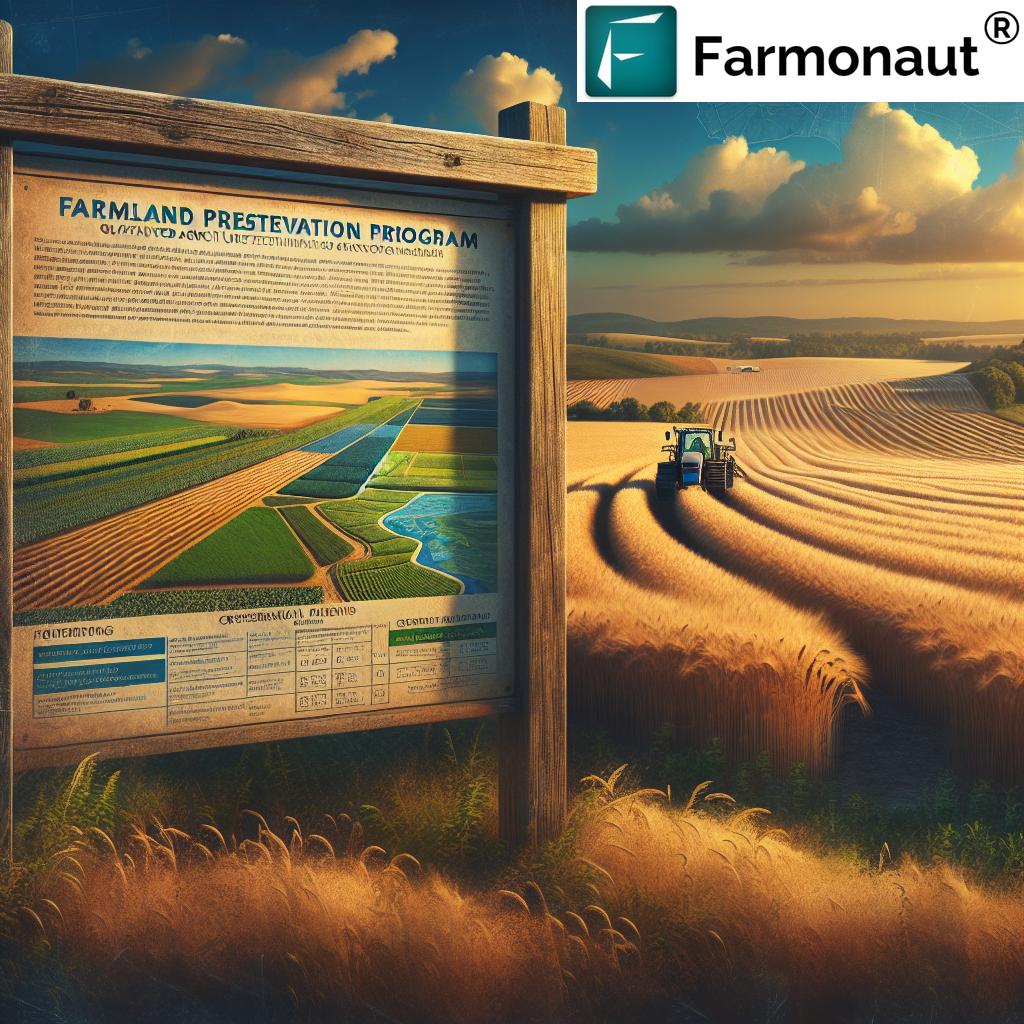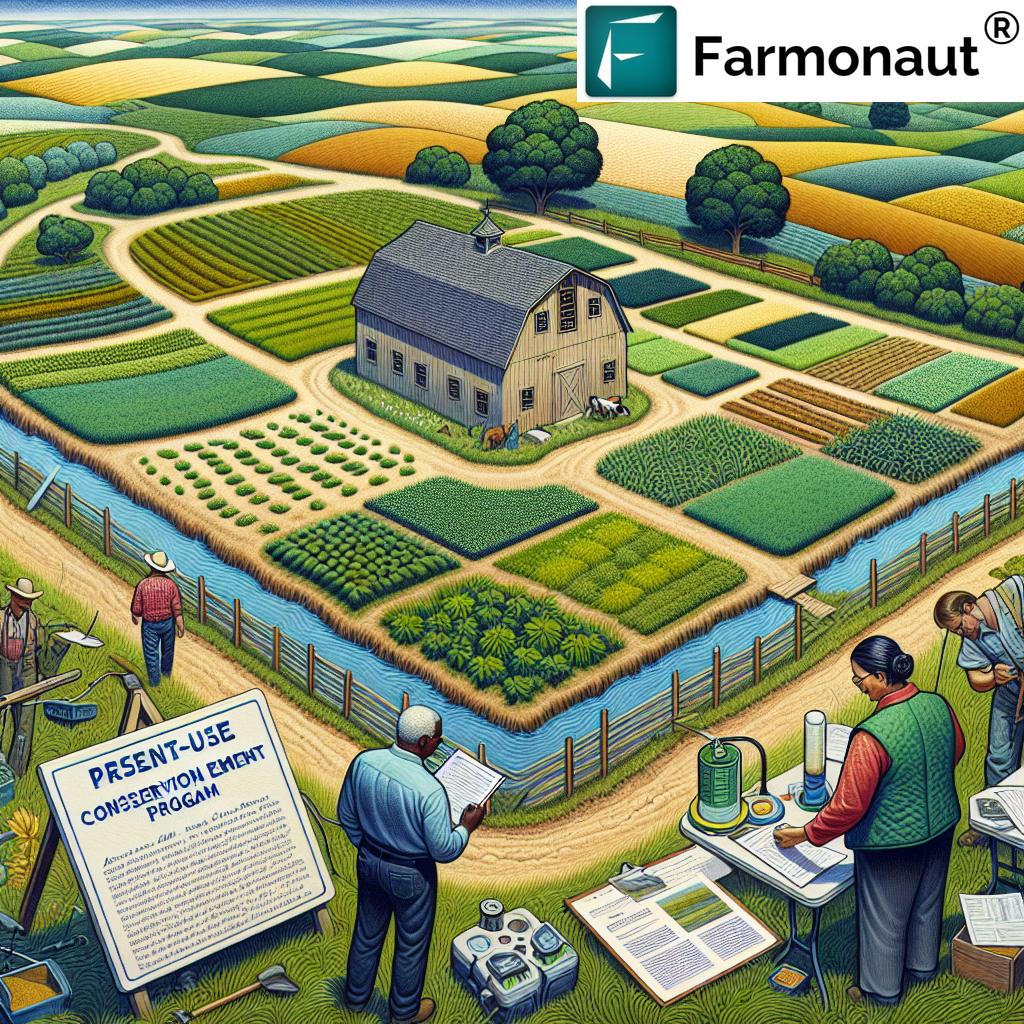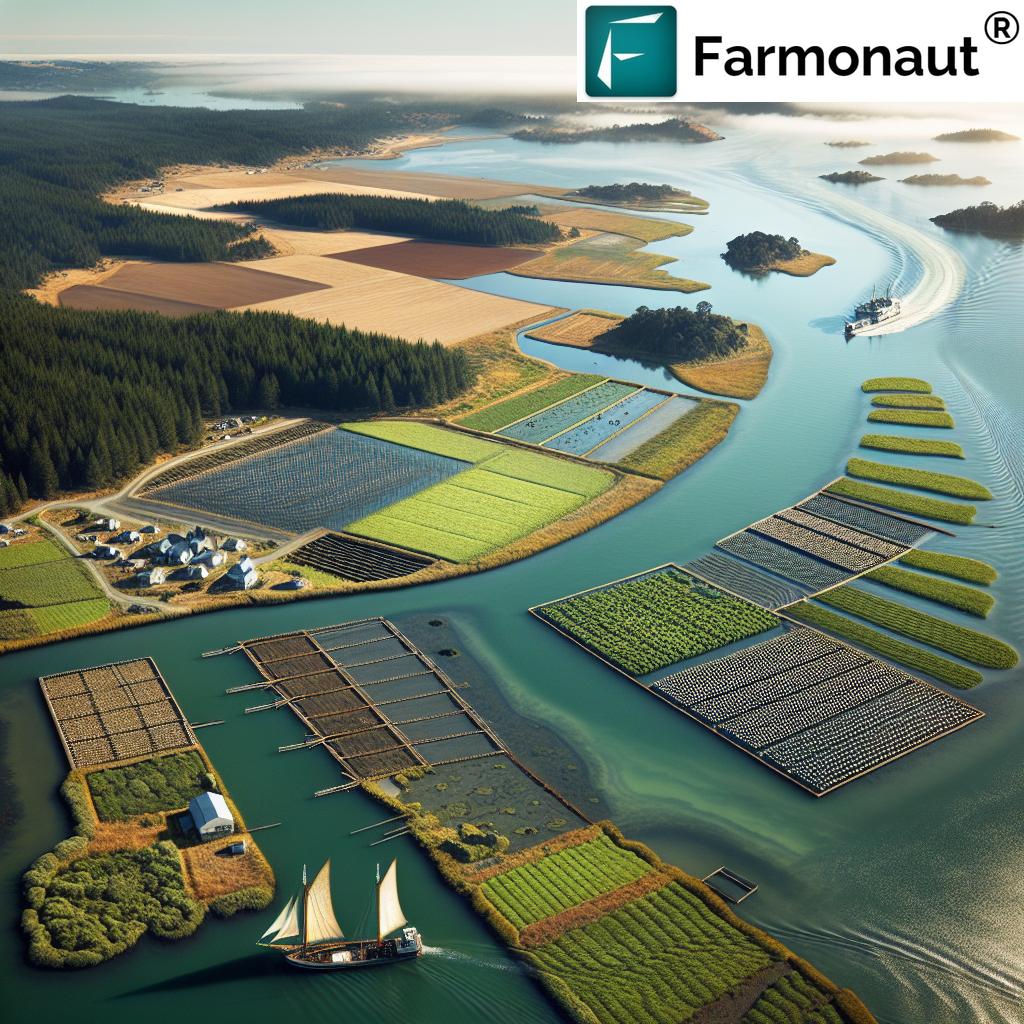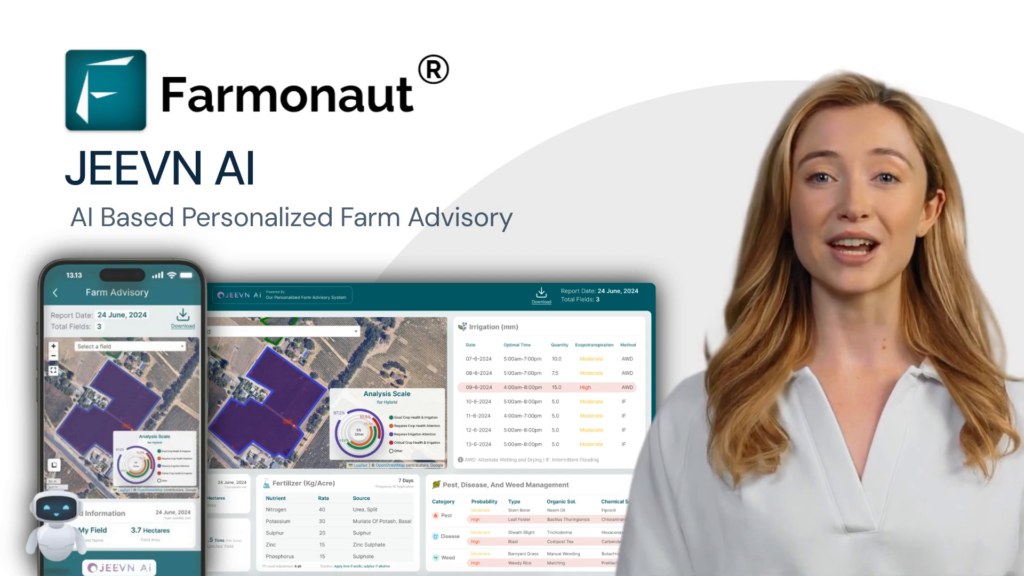North Carolina’s Innovative Farmland Preservation Program: How Rowan County is Funding Agricultural Conservation
“Rowan County’s program aims to redirect 100% of Present-Use Valuation Program penalties into farmland conservation efforts.”
In the heart of North Carolina, Rowan County is taking a bold step towards preserving its agricultural heritage and securing a sustainable future for its farmlands. As we delve into this innovative initiative, we’ll explore how the county is leveraging existing tax structures to fund a comprehensive farmland preservation program. This pioneering approach not only protects valuable agricultural resources but also demonstrates a commitment to environmental stewardship and sustainable farming practices.
Understanding the Present-Use Valuation Program
At the core of Rowan County’s innovative strategy lies the North Carolina Present-Use Valuation Program. This program is a cornerstone of the state’s agricultural tax incentives, offering significant tax breaks for farmland owners. Under this system, qualifying agricultural land, horticultural land, and forests are taxed based on their present use value rather than their market value. This approach provides substantial financial relief to farmers, potentially saving them thousands of dollars annually on property taxes.
However, when properties are removed from this program, they incur penalties. It is these penalties that Rowan County plans to redirect into a dedicated farmland preservation fund. This clever repurposing of funds demonstrates the county’s commitment to maintaining its agricultural landscape while balancing the pressures of development.
The Proposed Farmland Preservation Fund
The Rowan County Board of Commissioners is set to discuss a groundbreaking proposal for a farmland preservation fund. This fund would be financed by allocating 50% of the penalties collected from properties removed from the Present-Use Valuation Program, with an annual cap of $100,000. This approach ensures a steady stream of funding for conservation efforts without placing additional burdens on taxpayers or the county’s budget.

The proposed fund would be jointly managed by two key entities:
- The Rowan County Soil and Water Board
- The Rowan County Agriculture Advisory Board
This collaborative management structure ensures that decisions regarding fund allocation are made with both agricultural and environmental considerations in mind. The primary purpose of the fund would be to provide financial assistance to owners of qualifying farmland, supporting various aspects of conservation easement acquisition and maintenance.
Key Components of the Farmland Preservation Program
Let’s break down the essential elements of Rowan County’s proposed farmland preservation program:
- Conservation Easements: The fund would offset the costs associated with obtaining conservation easements. These legal agreements permanently limit uses of the land to protect its conservation values, ensuring long-term preservation of agricultural resources.
- Legal Fee Reimbursement: Recognizing the complex legal nature of conservation easements, the program would help farmland owners by reimbursing legal fees incurred during the process.
- Appraisal Support: The fund would cover the costs of property appraisals, an essential step in determining the value of conservation easements.
- Environmental Assessments: Baseline environmental assessments would be funded, providing crucial data on the current state of the land and its ecological features.
- Cost-Sharing for Easement Acquisition: The program would directly contribute to the costs of acquiring conservation easements, making it more financially feasible for farmland owners to participate.
This comprehensive approach addresses multiple barriers that often prevent landowners from pursuing conservation easements, making farmland preservation more accessible and appealing.
Aligning with North Carolina’s Agricultural Initiatives
Rowan County’s proposed program aligns seamlessly with broader North Carolina agricultural tax incentives and conservation efforts. The state has long recognized the importance of preserving its agricultural heritage and resources. By building upon the existing Present-Use Valuation Program, Rowan County is leveraging established frameworks to create a more robust system of farmland protection.
This initiative also complements the state’s focus on soil and water conservation funding. By allocating resources to environmental assessments and conservation easements, the program contributes to the broader goals of maintaining soil health and protecting water resources across North Carolina.
Benefits of the Farmland Preservation Program
The proposed program offers a multitude of benefits for Rowan County and its residents:
- Agricultural Heritage Preservation: By protecting farmland from development, the program helps maintain the county’s rich agricultural traditions and rural character.
- Economic Stability: Agriculture remains a vital part of Rowan County’s economy. Preserving farmland ensures the continuation of this important economic sector.
- Environmental Protection: Conservation easements help protect biodiversity, maintain wildlife habitats, and preserve open spaces.
- Water Quality Improvement: Preserved agricultural lands can act as natural filters, helping to maintain and improve water quality in local watersheds.
- Food Security: By ensuring the availability of productive farmland, the program contributes to long-term food security for the region.
- Climate Change Mitigation: Preserved farmlands can serve as carbon sinks, helping to mitigate the effects of climate change.
“North Carolina’s agricultural tax incentives offer significant breaks, potentially saving farmers thousands annually on property taxes.”
These benefits highlight the far-reaching impact of farmland preservation, touching on economic, environmental, and social aspects of community well-being.
Innovative Funding Model
What sets Rowan County’s approach apart is its innovative funding model. By redirecting penalties from the Present-Use Valuation Program, the county has found a way to fund conservation efforts without imposing new taxes or diverting funds from other essential services. This model could serve as an example for other counties and municipalities looking to establish or enhance their own farmland preservation programs.
The annual cap of $100,000 ensures that the fund remains sustainable and doesn’t overly impact the county’s budget. At the same time, it provides a significant pool of resources for conservation efforts. Based on the reported $790,000 in penalties collected over the past five years, this cap allows for a substantial portion of these funds to be directed towards farmland preservation while still maintaining flexibility in the county’s overall budget allocation.

Rowan County Farmland Preservation Program: Key Components and Benefits
| Program Component | Description | Estimated Impact |
|---|---|---|
| Funding Source | 50% of penalties from Present-Use Valuation Program, capped at $100,000 annually | Approximately $395,000 over 5 years for preservation efforts |
| Conservation Easements | Legal agreements to limit land use for conservation purposes | Potential to protect 500-1000 acres of farmland annually |
| Financial Assistance to Farm Owners | Support for legal fees, appraisals, and easement acquisition costs | Estimated 10-20 farms assisted per year |
| Soil and Water Conservation Efforts | Funding for environmental assessments and conservation practices | Improved soil health and water quality on protected lands |
| Joint Management | Oversight by Soil and Water Board and Agriculture Advisory Board | Balanced decision-making incorporating agricultural and environmental expertise |
| Legal and Environmental Support | Assistance with legal processes and environmental evaluations | Streamlined conservation easement process for 10-15 properties annually |
Challenges and Considerations
While the proposed farmland preservation program offers numerous benefits, it’s important to consider potential challenges:
- Balancing Development and Preservation: Rowan County must carefully navigate the tension between preserving farmland and accommodating necessary development.
- Long-term Funding Sustainability: The program’s reliance on penalties from the Present-Use Valuation Program means that funding levels may fluctuate. The county may need to explore additional funding sources in the future.
- Landowner Participation: The success of the program depends on farmland owners’ willingness to participate. Effective outreach and education will be crucial.
- Administrative Complexity: Managing conservation easements and distributing funds fairly will require robust administrative processes.
Addressing these challenges will be key to the long-term success and sustainability of the farmland preservation program.
The Role of Technology in Farmland Preservation
As we consider the future of farmland preservation in Rowan County and beyond, it’s worth noting the potential role of technology in supporting these efforts. Advanced agricultural technologies can complement conservation strategies by improving farm efficiency and sustainability. For instance, precision agriculture tools can help farmers optimize resource use, reducing environmental impact while maintaining productivity.
One such technological solution is offered by Farmonaut, a company specializing in satellite-based farm management solutions. Their platform provides valuable services such as real-time crop health monitoring and AI-based advisory systems. While not directly involved in Rowan County’s program, technologies like these can support the broader goals of farmland preservation by helping farmers maintain viable, sustainable operations on protected lands.
For example, Farmonaut’s carbon footprinting tool could be particularly relevant for farms under conservation easements, helping them monitor and reduce their environmental impact. This aligns well with the preservation program’s goals of environmental stewardship.
Community Engagement and Education
The success of Rowan County’s farmland preservation program will depend heavily on community engagement and education. Here are some key aspects to consider:
- Farmer Outreach: Educating farmers about the benefits of conservation easements and the financial assistance available through the program will be crucial for participation.
- Public Awareness: Raising public awareness about the importance of farmland preservation can help build community support for the initiative.
- Youth Education: Incorporating information about farmland preservation into local school curricula can help cultivate the next generation of agricultural and environmental stewards.
- Partnerships: Collaborating with local agricultural organizations, environmental groups, and educational institutions can help spread awareness and provide additional resources for the program.
By fostering a community-wide understanding of the importance of farmland preservation, Rowan County can ensure long-term support for this innovative program.
Looking to the Future: Scaling and Replication
As Rowan County embarks on this innovative farmland preservation journey, it’s worth considering the potential for scaling and replicating this model in other regions. The program’s innovative funding mechanism and comprehensive approach to conservation could serve as a template for other counties in North Carolina and beyond.
Some considerations for scaling and replication include:
- Adaptability: While the core concept can be applied broadly, programs may need to be tailored to local conditions and existing tax structures.
- Inter-County Collaboration: Neighboring counties could potentially pool resources and coordinate efforts for more significant regional impact.
- State-Level Support: As successful models emerge, there may be opportunities for increased state-level support and coordination of farmland preservation efforts.
- Data Sharing: Establishing systems for sharing data and best practices among counties could accelerate the adoption and improvement of farmland preservation programs.
By demonstrating the success of this innovative approach, Rowan County has the potential to influence farmland preservation strategies far beyond its borders.
The Intersection of Preservation and Innovation
While the primary focus of Rowan County’s program is on preserving farmland, it’s important to recognize that preservation and innovation in agriculture are not mutually exclusive. In fact, preserving farmland can provide a stable foundation for agricultural innovation to flourish.
Modern farming techniques and technologies can play a crucial role in making preserved farmland more productive and sustainable. For instance, advanced fleet management systems can help large-scale farms operate more efficiently, reducing their environmental footprint while maximizing productivity. Similarly, innovative crop insurance and loan programs can provide financial stability for farmers operating on preserved land, ensuring their long-term viability.
By embracing both preservation and innovation, Rowan County can create a resilient agricultural sector that is both deeply rooted in its heritage and well-equipped for the challenges of the future.
The Economic Impact of Farmland Preservation
While the environmental benefits of farmland preservation are clear, it’s also important to consider the economic impact of such programs. Preserving farmland can have significant positive effects on local economies:
- Job Preservation: By keeping land in agricultural use, the program helps maintain jobs in farming and related industries.
- Agritourism Opportunities: Preserved farms can become attractions for agritourism, bringing additional revenue to rural areas.
- Local Food Systems: Protected farmland can support robust local food systems, reducing transportation costs and keeping food dollars in the local economy.
- Ecosystem Services: Preserved farmland provides valuable ecosystem services such as flood mitigation and pollination, which have tangible economic benefits.
By considering these economic factors, we can see that farmland preservation is not just an environmental initiative, but a comprehensive strategy for sustainable economic development in rural areas.
Monitoring and Evaluation
As Rowan County implements its farmland preservation program, establishing robust monitoring and evaluation processes will be crucial. These processes will help ensure the program’s effectiveness and allow for continuous improvement. Key aspects of monitoring and evaluation could include:
- Acreage Tracking: Regularly updating records of the total acreage protected through conservation easements.
- Economic Impact Assessment: Evaluating the program’s impact on local agricultural economies and related industries.
- Environmental Monitoring: Assessing the program’s contribution to soil health, water quality, and biodiversity conservation.
- Participant Feedback: Gathering input from farmers and landowners participating in the program to identify areas for improvement.
- Cost-Benefit Analysis: Regularly reviewing the program’s costs and benefits to ensure it remains a sound investment for the county.
By implementing comprehensive monitoring and evaluation, Rowan County can ensure its farmland preservation program remains effective, efficient, and responsive to changing needs over time.
Conclusion: A Model for Sustainable Agricultural Preservation
Rowan County’s proposed farmland preservation program represents a innovative approach to balancing agricultural heritage with modern development pressures. By redirecting existing penalty funds into conservation efforts, the county has created a sustainable funding model that could serve as an example for other regions facing similar challenges.
The program’s comprehensive approach, addressing legal, financial, and environmental aspects of farmland preservation, demonstrates a deep understanding of the complexities involved in agricultural conservation. By providing support for conservation easements, the program offers a practical way for farmland owners to protect their land for future generations while potentially benefiting from financial incentives.
As we look to the future, the success of this program could have far-reaching implications. It has the potential to inspire similar initiatives across North Carolina and beyond, contributing to a broader movement of farmland preservation and sustainable agriculture. By protecting valuable agricultural resources, supporting local farmers, and maintaining rural landscapes, Rowan County is investing in a sustainable and resilient future for its community.
In an era of rapid development and environmental challenges, innovative programs like this are critical. They demonstrate how local governments can take proactive steps to preserve their agricultural heritage, support their farming communities, and contribute to broader environmental and food security goals. As Rowan County moves forward with this initiative, it will undoubtedly provide valuable lessons and insights for other communities looking to protect their agricultural resources for generations to come.
FAQ Section
- Q: How is the farmland preservation program funded?
A: The program is funded by redirecting 50% of the penalties collected from properties removed from the North Carolina Present-Use Valuation Program, with an annual cap of $100,000. - Q: Who manages the farmland preservation fund?
A: The fund is jointly managed by the Rowan County Soil and Water Board and the Rowan County Agriculture Advisory Board. - Q: What types of assistance does the program provide to farmland owners?
A: The program provides financial assistance for obtaining conservation easements, including reimbursement for legal fees, appraisals, environmental assessments, and cost-sharing for easement acquisition. - Q: How does this program benefit the community?
A: The program helps preserve agricultural heritage, supports local food production, protects environmental resources, and contributes to the county’s economic stability. - Q: Can farmland owners still use their land if they participate in the program?
A: Yes, conservation easements typically allow for continued agricultural use of the land while restricting development and certain practices that could harm conservation values. - Q: How long do conservation easements last?
A: Conservation easements are typically permanent, ensuring long-term protection of the farmland. - Q: How can farmers apply for assistance through this program?
A: While specific application procedures have not been detailed, interested farmers should contact the Rowan County Soil and Water Board or Agriculture Advisory Board for information once the program is implemented. - Q: Will this program affect property taxes for non-agricultural landowners?
A: No, the program is funded through existing penalties and does not impose new taxes on other property owners. - Q: How does this program align with state-level agricultural initiatives?
A: The program builds upon existing North Carolina agricultural tax incentives and aligns with state efforts for soil and water conservation. - Q: Can the program’s model be replicated in other counties?
A: Yes, the innovative funding model and comprehensive approach could potentially be adapted by other counties facing similar farmland preservation challenges.
Earn With Farmonaut: Affiliate Program
Earn 20% recurring commission with Farmonaut’s affiliate program by sharing your promo code and helping farmers save 10%. Onboard 10 Elite farmers monthly to earn a minimum of $148,000 annually—start now and grow your income!
Farmonaut Subscriptions
















